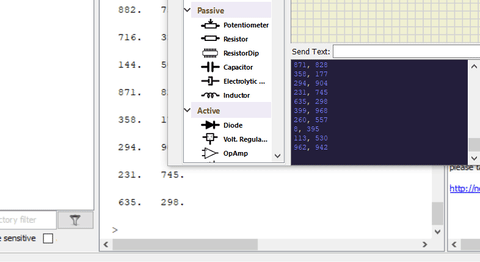OK, after a couple of days struggling I figured this out. It turns out that SciLab doesn't have native serial communication functionality and the Toolbox developer has used TCL_EvalStr to run Tcl commands externally. I had to dig into the Tcl serial communication syntax (i.e. read, open, gets, fconfigure ... ), ask another question, get some help and then finally end up with a new function for the Toolbox which I have committed as a pull request:
function buf = readserialline(h)
tmpbuf = emptystr();
while tmpbuf == emptystr()
TCL_EvalStr("gets " + h + " ttybuf");
tmpbuf = TCL_GetVar("ttybuf");
end
buf = tmpbuf;
endfunction
now one can get the above behavior by running:
h = openserial(7, "9600,n,8,1") // open COM7
for ii = 1:40
disp(readserialline(h))
end
closeserial(h)
to read the serial port line by line and print it to the SciLab console. Now to parse the CSV data you may use:
csvTextScan(part(readserialline(h), 1:$-1), ',')

P.S.1. I have used a virtual Arduino board inside SimulIDE and used com0com to create virtual serial ports. More information here on SourceForge.
P.S.2. More discussion with Toolbox developer Aditya Sengupta here on Twitter.
P.S.3. More discussions here on Tcl Google group
P.S.4. A full demonstration plus instructions here on Reddit
P.S.5. For those who might endup here I have decided to fork Aditya Sengupta's repository here with several improvements.
与恶龙缠斗过久,自身亦成为恶龙;凝视深渊过久,深渊将回以凝视…
